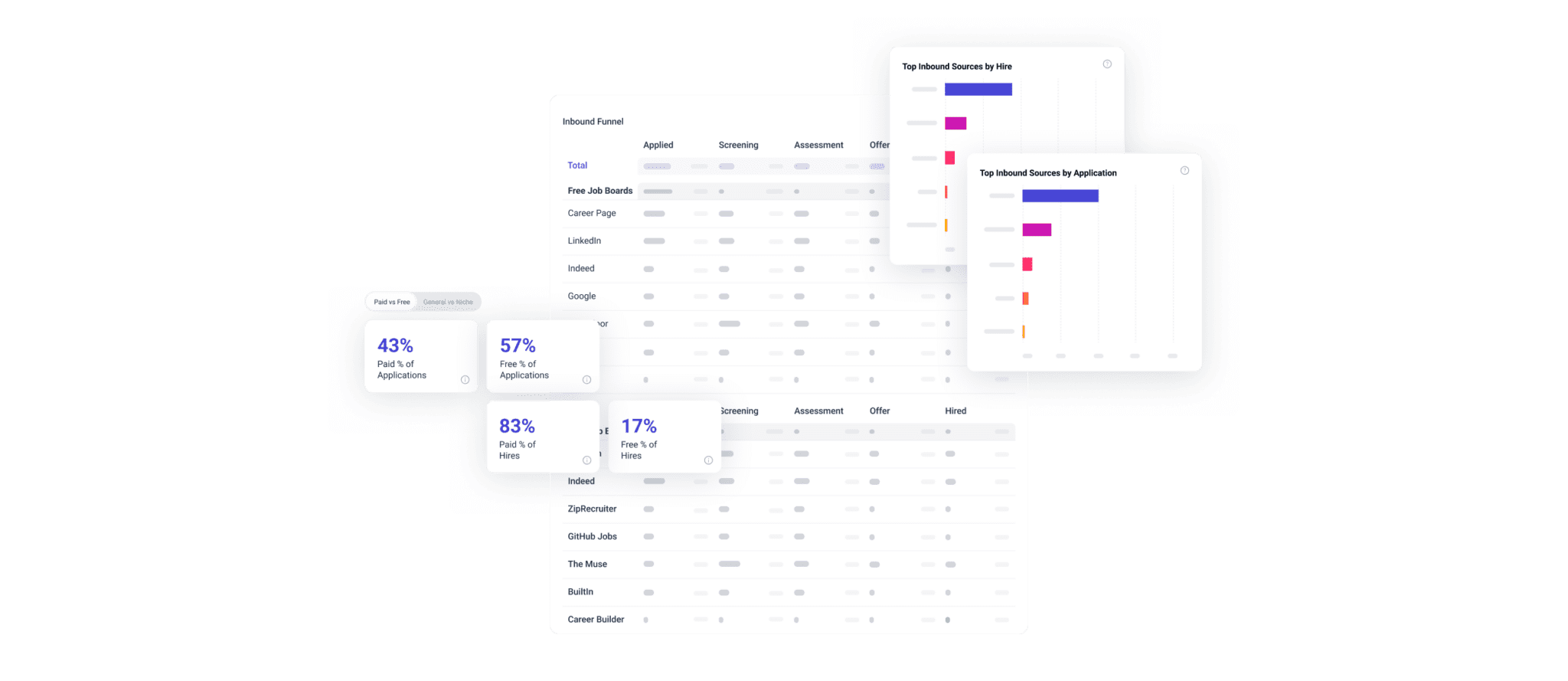2023 was a year many talent acquisition practitioners would like to forget (or at least wave goodbye to as soon as possible). From pervasive layoffs and departmental budget cuts to a historically tight labor market that persisted against all odds, 2023 threw even more challenges at a profession that’s been consistently performing heroics since the pandemic arrived four long years ago.
Not the least of those challenges was the U.S. Supreme Court’s decision to effectively end affirmative action in higher education. While the verdict technically has nothing to do with employment, it has immediately cast scrutiny, confusion, and concern on the diversity, equity, and inclusion (DEI) practices in corporate America that were widely celebrated as recently as 2020 and 2021.
In a high-interest rate economy that has businesses scaling back investments considered non-revenue-generating, corporate DEI programs are vulnerable targets – and the disruption resulting from Students for Fair Admissions v. Harvard clouds their future. It’s nearly impossible to predict what DEI will look like in 2024 and beyond – and as a recruiting leader, it’s tough to know exactly what you should (and can) do, say, and budget for in the coming year.
But if there’s one thing we’re confident about here at Datapeople, it’s that a fair, inclusive hiring process is not only legal – it’s efficient, effective, and a powerful driver of an organically diverse workforce that impacts your business’s bottom line. Hiring equity should be TA teams’ North Star in 2024 – and it’s possible to achieve, no matter how limited your resources are.
What we know about the end of affirmative action and DEI in the workplace
In June of 2023, the U.S. Supreme Court banned affirmative action in college admissions, rendering it unlawful for colleges and universities to consider an applicant’s race to build a more diverse student body. While the reversal of affirmative action doesn’t apply to corporate workplaces, it will directly impact them down the road.
For decades, employers have counted on colleges to prepare early-career talent of all backgrounds to come work for them – which means changes in student body composition will undoubtedly affect the demographics of corporate hiring pipelines. That’s why 82 corporate employers (including Apple, General Electric, General Motors, Mastercard, Meta, and P&G) submitted amicus briefs to the Supreme Court asking it to uphold affirmative action.
Historically, wherever affirmative action has been eradicated, it’s been accompanied by a sizable drop in minority admissions. When California eliminated the use of race in admissions decisions at its public universities, Black undergraduate enrollment at UCLA dropped from 7% to 3.9% in just three years.
Now that students from historically underrepresented groups are even less likely to be admitted to elite universities, it’s reasonable to assume they’ll have fewer opportunities to get hired into corporate America. And increased efforts in state legislatures to restrict diversity initiatives in public institutions will almost certainly affect campus recruiting efforts on a broad scale.
What remains to be seen
While we can clearly draw a straight line between the makeup of America’s college student population and the demographics of its college-educated workforce, it’s less obvious what the ban on affirmative action means for workplace efforts specifically intended to increase diversity, equity, and inclusion.
Misguided characterizations of DEI initiatives as “reverse discrimination” aren’t new, but they’re likely to increase. Shortly after the SCOTUS ruling, 13 Republican attorneys general sent a letter to Fortune 100 CEOs cautioning them that DEI is “unlawful and wrong.” (Note: it isn’t; the letter erroneously conflates affirmative action with DEI practices.)
Most recently, a nonprofit led by former Trump Administration officials has called for investigations into American, United, and Southwest Airlines for their DEI approaches. (Major League Baseball, Starbucks, and Kellogg’s are also on the organization’s hit list for their diversity programs.) While EEOC affirms that “it remains lawful for employers to implement diversity, equity, inclusion, and accessibility programs that seek to ensure workers of all backgrounds are afforded equal opportunity in the workplace,” employers must pay attention to the changing landscape.
With legal risk growing and investment in overall employee experience shrinking, it’s logical to conclude that companies will overwhelmingly rein in their commitments to DEI in the next year. Yet there’s encouraging data to the contrary. According to one source, in late 2023, 58% of HR leaders reported that their companies had placed an even greater emphasis on DEI than in years past. 65% said their DEI budgets had increased, and 86% said the Supreme Court’s decision to overturn affirmative action puts more pressure on employers to monitor and improve DEI.
Similarly, in our own recent webinar on improving DEI efforts in talent acquisition in 2024, only 4% of poll respondents agreed that affirmative action-related public backlash is their greatest threat to DEI progress. While 54% named insufficient budget, headcount, and other internal support as the top challenge. So although the public backlash may not be the primary concern, significant headwinds exist for corporate America’s DEI efforts.
What you can do now (and no matter how things shake out in the future)
By now, we all know that a diverse and representative workforce is business-critical, and companies determined to remain competitive should continue devoting adequate resources to DEI while staying abreast of, and adhering to, the latest rules and regulations. Fortunately, optimizing your hiring process for fairness and inclusivity doesn’t need to be contentious, expensive, or even owned by a dedicated DEI lead or team. (In fact, real change occurs when hiring managers and their recruiting partners consistently hold each other accountable for running a fair, inclusive process.)
If anything, solving for hiring inequity should be more of a priority than ever right now, since most TA teams don’t have capacity for inefficiency. (And excluding entire groups of qualified job seekers from your searches, or making it uniquely difficult for them to get hired, is highly inefficient – not to mention unethical.)
If you ensure that your hiring process is inclusive, not only will you be on the right side of the law – you’ll improve the quantity, quality, and diversity of your candidate pipeline, enabling you to fill roles faster and more cost-effectively. But to do so, you must systematically bake fairness into every step of your process, beginning with intake and job post creation. Here’s a few practical tips to get started.
During intake, design and align on inclusive opportunities
Your hiring outcomes are impacted from the very top: the recruiter-hiring manager intake, or “kickoff,” meeting. Standardizing and debiasing this step is critical for a fair hiring process end to end.
For each new requisition, the recruiter and hiring manager should align on the qualifications truly necessary to perform the job. Is every requirement the hiring manager expects actually critical to getting the job done? If the answer is “no,” take it off the table – because with every requirement you add, you’re increasing your chances that qualified talent will self-select out.
Another way to design inclusive roles early on: consider whether the eventual hire really needs to be 100% onsite to be effective, and make jobs remote or hybrid if not. According to LinkedIn, remote roles make up 15% of all job listings on the platform, yet attract more than half (51.5%) of all applicants. And “what’s become clear,” the company observes, is that “remote jobs are a major attraction for underrepresented communities”: there’s been a 33% increase and a 27% increase in the share of Latinas and Black women applying for remote roles on LinkedIn, respectively.
Our own research at Datapeople confirms this. Not only do remote jobs attract 4.4x more applicants than onsite jobs do overall, they also attract 4.5x more female applicants than onsite jobs do. (Hybrid roles aren’t quite as popular, but they still outperform onsite roles, attracting 55% more applicants overall and 45% more women.)
Optimize your job posts for inclusivity
Your job post is usually the first (and likely only) thing a potential candidate will see before applying for your open role. Yet only 26% of companies have a process in place for writing inclusive job descriptions. Highly performant job posts that attract large, diverse, qualified candidate pools share these characteristics, among others:
- Their titles are industry-standard and calibrated to the role. Obscure titles (“Chief Geek,” “Digital Prophet”) and inflated titles that sound more senior than what the job responsibilities imply can confuse qualified job seekers and deter them from applying.
- They use unbiased and accessible language. The language in your job posts should send signals to all qualified talent that they’re welcome in your hiring process (and, should they receive an offer, your organization).
- They don’t list vague, generic soft skills. Since potential candidates use the requirements and responsibilities sections as checklists for quickly matching their skillset to the job and deciding whether to apply, including a laundry list of confusing, subjective, or difficult-to-calibrate soft skills makes them more likely to pass.
- They emphasize their company’s commitment to DEI with a diversity statement. It never hurts to be explicit about how much you value diversity and prioritize fairness in hiring. Our own internal data indicates that DEI statements on job postings impact the perceived inclusiveness of employers.
- They include a salary range (even in locations that don’t mandate it). Pay transparency is attractive to job seekers of all backgrounds, but it has a special appeal for historically underrepresented talent since the salary range disclosed in the job post will be the range regardless of the new hire’s race, gender, sexual orientation, and so on.
This is nuanced territory, and there are solutions out there to help. The Datapeople platform ensures that your job posts are consistently inclusive, rooted in fairness, and free of potential biases including sexism, racism, tokenism, ableism, ageism, nationalism, religious bias, and elitism.
Leverage data to elevate your hiring process
Ideally, your top-of-funnel makeup will be reflected in your bottom-of-funnel outcomes, but if there are inadvertent biases present in your hiring process – whether in an assessment, compensation and benefits, or a hiring manager – data will alert you to that fact.
According to Paradigm, less than ⅓ of companies analyze hiring outcomes by gender, and just over ¼ analyze them by race/ethnicity. Without clarity on how different demographics are performing at every stage of your funnel, from application to offer acceptance, you can’t identify unfair hiring practices or obstacles that are isolated to specific candidate populations.
The recruiting metrics that matter most here are pass-through rates by demographic. When pass-through rates for various groups roughly mirror one another, it suggests your process is free of systemic barriers that might prevent candidates of certain backgrounds from advancing or getting hired. When you observe clear differences between groups, use that data to meaningfully approach and adjust the stages proving to be unfair or exclusionary.
Navigating the end of affirmative action and DEI in 2024
If there’s anything we’ve learned since our founding in 2015, it’s that while the concept of (and acronyms for…and investment in…and best practices around) DEI is constantly evolving, a fair hiring process is an efficient, effective hiring process – and that’s always an unwavering priority for TA and business leaders alike. If you want to know more about how Datapeople can support your efforts to bring equity to the hiring process – especially in this resource-constrained, post-affirmative action environment – we’d love to show you how.







